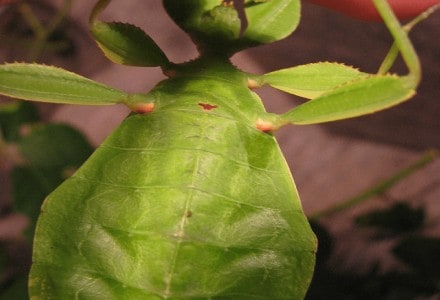
Phyllium siccifolium Facts
- Phyllium siccifolium names a type of leaf insect which has no acknowledged common name. It was, in fact, the first species of leaf insect recognized.
- Like all species of this rather unusual and distinctive type of insect and many related species, it remains a master of camouflage.
- This quite remarkable, and visually appealing, invertebrate actually ranks as the largest known form of walking leaf, a subfamily within its order.
- The fascinating creature was first described in 1754. Since then, it has been assigned a variety of scientific names.
- The Phyllium siccifolium is a leaf #insect and one of the largest of all leaf insects that scientists know. Click To Tweet
Phyllium siccifolium Physical Description
The Phyllium siccifolium represents one of the largest of all leaf insects that entomologists know of. It also exhibits sexual dimorphism.
This presents itself in a size difference between the sexes. The adult males attain an average length of roughly 2.75 in (7 cm), while the females often reach 4 in (10 cm).
Both sexes have wings, however, only the males fly. The females remain unable to do so, perhaps due to their greater body mass.
The insect possesses three pairs of legs with the first pair generally significantly shorter than the others. Individuals appear predominantly green in color, with minor variations.
Kingdom: Animalia
Phylum: Euarthropoda
Class: Insecta
Order: Phasmatodea
Family: Phylliidae
Genus: Phyllium
Species: P. siccifolium
Phyllium siccifolium Distribution, Habitat, and Ecology
The astonishing Phyllium siccifolium also evolved as endemic to a rather wide range. This includes India, China, Malaysia, and the Philippines, in Asia.
Within this range, the insect lives almost exclusively in tropical or subtropical climates. In that habitat, its camouflage provides it with excellent defense.
Individuals remain primarily active at either dusk or night. Phyllium Siccifolium is entirely herbivorous by nature, feeding on the leaves of a rather wide variety of plants within its endemic range
Check out our other articles on Giant Lubber Grasshopper, Green Bush Cricket, Desert Locust

